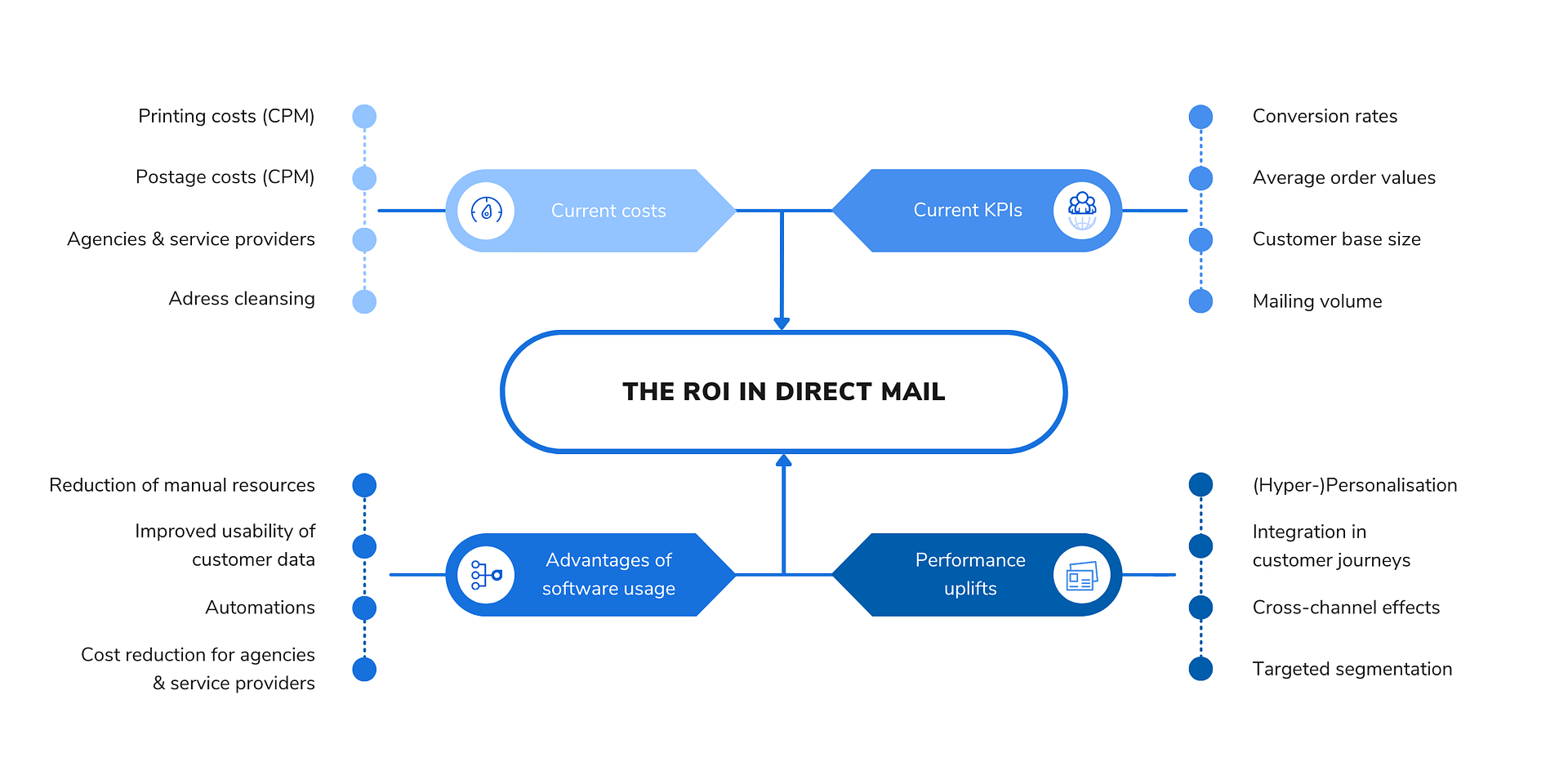
Sales increase over cost efficiency: The ROI in direct mail
What should your media mix look like in order to be as engaging as possible for your customers and thereby generate the biggest success possible? According to the mindset of the status quo, the first thing to look at is the cost of an advertising medium. Using this logic, it has long been believed that what costs too much will not be done or must be planned well in advance. However, with the changing zeitgeist, this kind of strategic approach is no longer appropriate. Not only does it result in a loss of potential, but also of flexibility. Instead of focusing exclusively on costs, other parameters should also be considered. To do so, questions like these should be answered: What goal am I pursuing with an advertising tool? Which customer group do I want to address? And what return on investment can I expect?
Customer centricity is not limited to budget
The basis for answering these questions is not your available budget, but rather your customers. A satisfied and recurring customer is a far more sustainable success factor than saved costs. So it only makes sense that print mailings are enjoying an unprecedented revival. If it were only a question of costs, they would not be able to compete with e-mails. But if you look at the track record of direct mail, even successful e-mail campaigns are overshadowed. Assuming the print campaign follows a cross-channel strategy and the technical infrastructure lies on a solid foundation. Increases in sales of 10-50% and conversion rates of 4-10% prove that these efforts are well worth it.
Considering the bigger picture
Naturally, the costs of a campaign continue to play a central role. Especially in light of rising energy and paper prices, costs are a sensitive issue which calls for detailed planning. The emphasis here is clearly on “detailed”, as a comprehensive basis for decision-making is vital when a relatively expensive advertising medium such as direct mail is to complement the existing media mix in a targeted way. In addition to parameters of the status quo, this decision-making process also takes into account possible cost and effort reductions through improvements in operational implementation. The campaign objectives, the selection of the customer target group as well as the resulting implementation of the mailing (degree of personalisation, vouchers, etc.) must also be included in the calculation. All this will later be reflected in your return on investment.
This simplified presentation is based on the years of expertise of our sales experts and is intended to give you an authentic picture of which parameters, in addition to the expected costs, must be included in your media planning.

Cost efficiency is an outdated concept, as it lacks needed flexibility and hinders your growth opportunities. If, on the other hand, you invest in the right tools, you will not only be rewarded with increased sales, but you will also develop strong customer loyalty and gain a competitive advantage.
Promising prospects: The ROI in direct mail campaigns
By now you might be asking yourself if this kind of investment would be profitable. Of course, this depends on your internal structures and individual case. Are you already using a marketing cloud or a CDP system? What data do you have available? Which customers do you want to address with direct mail? But in general, the success rates of direct mail campaigns speak for themselves. We have compiled a few for you.
- 67% of respondents believe that direct mail has the best ROI of all the channels used by the companies themselves.
- 86% of the companies surveyed believe they can measure the ROI of their direct mail campaigns. Among them, 72% believe that this measurement is reliable.
- If the direct mail workflow is designed to be more operatively efficient, costs can be reduced by up to 85%, thereby significantly increasing the ROI.
The experience of our customers also confirms that the digitalised and data-driven use of print mailings generates significant revenue effects. We see a direct link between the performance of a direct mail campaign and possible increases in turnover and thus ROI. Performance drivers such as personalisation and segmentation as well as cross-channel effects provide significant revenue uplifts.
- Integration into the customer journey: 15-30%
- Cross-channel effects: 5-10%
- Segmentation of the buyer persona: 20-30%
- (Hyper-)Personalisation: 20-40%
- Easier A/B testing: 5-30%
Further analysis showed that one third of the campaigns which included direct mail in their marketing mix achieved a 10% increase in sales compared to the average marketing campaign in the UK (without direct mail). In addition, the ROI was also positively influenced by cross-channel effects.
- 6% of addressed mailings resulted in a purchase
- 6% of addressed mailings resulted in a voucher redemption
- 8% of addressed mailings led to a visit or search on the internet
- 14% of addressed mailings led to a conversation in the household
Costs will always be a factor and they will most likely increase. Therefore, the question is how to optimise ROI so that costs can be offset, revenues can be increased and customer loyalty can be developed at the same time. This can hardly be achieved by pure cost efficiency and without a digitalised infrastructure.



















